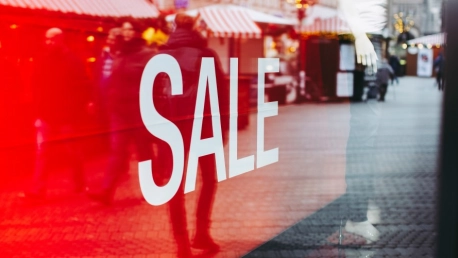Although the winter holidays are essential for retailers around the world, the COVID-19 pandemic is still disrupting shopping habits and trends in retail. While many people had hoped that a return to normality will be possible this holiday season, the Omicron variant quickly changed those plans and made retailers face new challenges that threatened the sector yet again. Retailers attempted to adapt their businesses to many new challenges, including the potential impact of the new Omicron variant on their ability to have a normal holiday season.
Almost two years have passed since the beginning of the pandemic, and it comes as no surprise that retailers everywhere decided to use technology to fix new problems, save the holiday season and adapt their business to face future uncertainties. As they developed new smart solutions to fix these issues, shoppers in the US and abroad quickly adopted them. Some of these solutions are bound to become new retail trends that will probably reshape the future for many years to come.
The rise of the ‘Buy Nothing’ movement
The COVID-19 pandemic has fueled different conscious consumerism movements around the world, especially among younger consumers. One of the most successful is the ‘Buy Nothing’ movement, a network of online groups where people everywhere associate in order to donate and receive things. According to The New York Times, people on these social media groups or platforms are dealing with the items they no longer use by gifting them to others who need them, in order to avoid new purchases.
The ‘Buy Nothing’ movement is not just a new way of picking out Christmas presents with little or no cost. This trend may grow to become a threat to the retail sector, unless retailers adapt by offering their own upcycled items to those who require them.
Cashierless stores are becoming a reality
The long-standing COVID-19 pandemic has not only exacerbated the switch to online sales but has also changed existing attitudes about cash payments. As a result, Amazon opened its first cashierless store in Britain in August 2021, prompting many retailers to do the same. While some shoppers may be concerned with data safety, cashierless stores are bound to provide others with good reason to adopt them.
In fact, the shopping experience in a cashierless store is personalized and more easily accessible, providing shoppers with what can grow to become a better alternative to online shopping.
Using advanced AR/VR technology for entertainment
With inflation rising around the world, and even more so in the US, it comes as no surprise that potential customers everywhere may need new reasons to shop. According to Ericsson’s new 10 Hot Consumer Trends 2030 report, the malls of the future will include event halls where AR/VR technology can be used to recreate historic events, allow the public to take part in musicals, interactive films, or even virtual pieces of art.
According to the report, most respondents predict that these event halls will be equipped with telepresence technology that will make them feel like they are taking part in the event in person.
Social commerce will grow in 2022 and beyond
The COVID-19 pandemic has already changed the way people around the world learn, work and spend their free time. As a result, social commerce has also become a new trend in retail, by allowing users everywhere to use social media platforms not only to talk to colleagues, friends and family but to also make their purchases.
Boosted by the COVID-19 pandemic, social commerce will probably continue to grow and change the retail sector in 2022 and beyond.
New hybrid brick-and-portal stores
It comes as no surprise that the global healthcare crisis has fueled online sales around the world, while brick-and-mortar stores were left struggling. However, according to the Hot Consumer Trends 2030 report, most shoppers now hope they will be able to try out new products in a projection of their own home inside real stores by 2030.
74% of consumers expect never-ending stores to become a reality, allowing them to enjoy multiple customized suggestions for products that might work well with what they already have before making a purchase.
New technologies and platforms can not only solve current problems, but also reshape the future and make it brighter and better adapted to customers’ needs. While many trends have appeared as reactions to issues caused by the COVID-19 pandemic and the global crisis that followed, they will probably remain with us for years to come.









